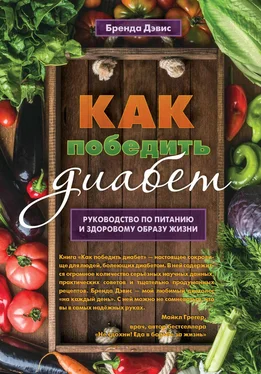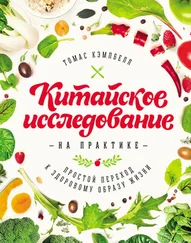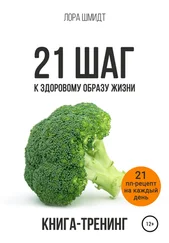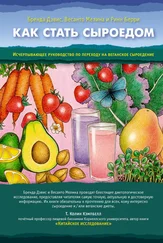19. Silveira AC, Dias JP, Santos VM, et al. The action of polyphenols in Diabetes Mellitus and Alzheimer’s disease: a common agent for overlapping pathologies. Curr Neuropharmacol . 2018; 16.
20. Singh H, Venkatesan V. Treatment of ‘diabesity’: Beyond pharmacotherapy. Curr Drug Targets . 2018; 19(14): 1672–1682.
21. Carrera-Quintanar L, López Roa RI, Quintero-Fabián S, et al. Phytochemicals that influence gut microbiota as prophylactics and for the treatment of obesity and inflammatory diseases. Mediators Inflamm . 2018; 2018: 9734845.
22. Ahangarpour A, Sayahi M, Sayahi M. The antidiabetic and antioxidant properties of some phenolic phytochemicals: A review study. Diabetes Metab Syndr Clin Res Rev . 2019; 13(1): 854–857.
23. Silva B, Oliveira P, Casal S, et al. Promising potential of dietary (poly)phenolic compounds in the prevention and treatment of diabetes mellitus. Curr Med Chem . 2017; 24(4): 334–354.
24. Leiherer A, Mündlein A, Drexel H. Phytochemicals and their impact on adipose tissue inflammation and diabetes. Vascul Pharmacol . 2013; 58(1–2): 3–20.
25. Zhang D-W, Fu M, Gao S-H, Liu J-L. Curcumin and diabetes: A systematic review. Evidence-Based Complement Altern Med . 2013; 2013: 16.
26. Sanati S, Razavi BM, Hosseinzadeh H. A review of the effects of Capsicum annuum L. and its constituent, capsaicin, in metabolic syndrome. Iran J Basic Med Sci . 2018; 21(5): 439–448.
27. Zhu J, Chen H, Song Z, et al. Effects of ginger (Zingiber officinale Roscoe) on type 2 diabetes mellitus and components of the metabolic syndrome: A systematic review and meta-analysis of randomized controlled trials. Evid Based Complement Alternat Med . 2018; 2018: 5692962.
28. Fernando WMADB, Somaratne G, Goozee KG, et al. Diabetes and Alzheimer’s disease: Can tea phytochemicals play a role in prevention? J Alzheimer’s Dis . 2017; 59(2): 481–501.
29. Fu Q-Y, Li Q-S, Lin X-M, et al. Antidiabetic effects of tea. Molecules . 2017; 22(5): 849.
30. Szkudelski T, Szkudelska K. Resveratrol and diabetes: from animal to human studies. Biochim Biophys Acta – Mol Basis Dis . 2015; 1852(6): 1145–1154.
31. Öztürk E, Arslan AKK, Yerer MB, Bishayee A. Resveratrol and diabetes: A critical review of clinical studies. Biomed Pharmacother . 2017; 95: 230–234.
32. Behloul N, Wu G. Genistein: A promising therapeutic agent for obesity and diabetes treatment. Eur J Pharmacol . 2013; 698(1–3): 31–38.
33. Chen S, Jiang H, Wu X, Fang J. Therapeutic effects of quercetin on inflammation, obesity, and type 2 diabetes. Mediators Inflamm . 2016; 2016: 9340637.
34. Link LB, Potter JD. Raw versus cooked vegetables and cancer risk. Cancer Epidemiol Biomarkers Prev . 2004; 13(9): 1422–1435.
35. Roohbakhsh A, Karimi G, Iranshahi M. Carotenoids in the treatment of diabetes mellitus and its complications: A mechanistic review. Biomed Pharmacother . 2017; 91: 31–42.
36. Manna P, Jain SK. Obesity, oxidative stress, adipose tissue dysfunction, and the associated health risks: Causes and therapeutic strategies. Metab Syndr Relat Disord. 2015; 13(10): 423–444.
37. Yoo JY, Kim SS. Probiotics and prebiotics: present status and future perspectives on metabolic disorders. Nutrients. 2016; 8(3): 173.
38. Barengolts E. Gut microbiota, prebiotics, probiotics, and synbiotics in management of obesity and prediabetes: Review of randomized controlled trials. Endocr Pract . 2016; 22(10): 1224–1234.
39. Sáez-Lara MJ, Robles-Sanchez C, Ruiz-Ojeda FJ, et al. Effects of probiotics and synbiotics on obesity, insulin resistance syndrome, type 2 diabetes and non-alcoholic fatty liver disease: A review of human clinical trials. Int J Mol Sci . 2016; 17(6).
40. Baker EJ, Miles EA, Burdge GC, et al. Metabolism and functional effects of plant-derived omega-3 fatty acids in humans. Prog Lipid Res . 2016; 64: 30–56.
41. Molfino A, Amabile MI, Monti M, Muscaritoli M. Omega-3 Polyunsaturated fatty acids in critical illness: Anti-inflammatory, proresolving, or both? Oxid Med Cell Longev. 2017; 2017: 5987082.
42. Bhaswant M, Poudyal H, Brown L. Mechanisms of enhanced insulin secretion and sensitivity with n-3 unsaturated fatty acids. J Nutr Biochem . 2015; 26(6): 571–584.
43. Trautwein EA, Koppenol WP, De Jong A, et al. Plant sterols lower LDL-cholesterol and triglycerides in dyslipidemic individuals with or at risk of developing type 2 diabetes: A randomized, double-blind, placebo-controlled study. Nutr Diabetes . 2018; 8: 30.
44. Vilahur G, Ben-Aicha S, Diaz E, et al. Phytosterols and inflammation. Curr Med Chem . 2018; June 22 (e-pub ahead of print).
45. Derdemezis CS, Filippatos TD, Mikhailidis DP, Elisaf MS. Review article: effects of plant sterols and stanols beyond low-density lipoprotein cholesterol lowering. J Cardiovasc Pharmacol Ther . 2010; 15(2): 120–134.
46. Cooper AJM, Sharp SJ, Luben RN, et al. The association between a biomarker score for fruit and vegetable intake and incident type 2 diabetes: the EPIC-Norfolk study. Eur J Clin Nutr . 2015; 69(4): 449–454.
47. Liang J, Zhang Y, Xue A, et al. Association between fruit, vegetable, seafood, and dairy intake and a reduction in the prevalence of type 2 diabetes in Qingdao, China. Asia Pac J Clin Nutr . 2017; 26(2): 255–261.
48. Li M, Fan Y, Zhang X, et al. Fruit and vegetable intake and risk of type 2 diabetes mellitus: meta-analysis of prospective cohort studies. BMJ Open . 2014; 4(11): e005497.
49. Schwingshackl L, Hoffmann G, Lampousi A-M, et al. Food groups and risk of type 2 diabetes mellitus: a systematic review and meta-analysis of prospective studies. Eur J Epidemiol . 2017; 32(5): 363–375.
50. Clark JL, Taylor CG, Zahradka P. Rebelling against the (insulin) resistance: A review of the proposed insulin-sensitizing actions of soybeans, chickpeas, and their bioactive compounds. Nutrients . 2018; 10(4).
51. Agrawal S, Ebrahim S. Association between legume intake and self-reported diabetes among adult men and women in India. BMC Public Health . 2013; 13(1): 1.
52. Villegas R, Gao Y-T, Yang G, et al. Legume and soy food intake and the incidence of type 2 diabetes in the Shanghai Women’s Health Study. Am J Clin Nutr . 2008; 87(1): 162–167.
53. Tian S, Xu Q, Jiang R, Het al. Dietary protein consumption and the risk of type 2 diabetes: A systematic review and meta-analysis of cohort studies. Nutrients . 2017; 9(9).
54. Aune D, Norat T, Romundstad P, Vatten LJ. Whole grain and refined grain consumption and the risk of type 2 diabetes: A systematic review and dose-response meta-analysis of cohort studies. Eur J Epidemiol . 2013; 28(11): 845–858.
55. Ye EQ, Chacko SA, Chou EL, et al. Greater whole-grain intake is associated with lower risk of type 2 diabetes, cardiovascular disease, and weight gain. J Nutr . 2012; 142(7): 1304–1313.
56. Kyrø C, Tjønneland A, Overvad K, et al. Higher whole-grain intake is associated with lower risk of type 2 diabetes among middle-aged men and women: The Danish diet, cancer, and health cohort. J Nutr . 2018; 148(9): 1434–1444.
57. Asghari G, Ghorbani Z, Mirmiran P, Azizi F. Nut consumption is associated with lower incidence of type 2 diabetes: The Tehran Lipid and Glucose Study. Diabetes Metab . 2017; 43(1): 18–24.
58. Luo C, Zhang Y, Ding Y, et al. Nut consumption and risk of type 2 diabetes, cardiovascular disease, and all-cause mortality: A systematic review and meta-analysis. Am J Clin Nutr . 2014; 100(1): 256–269.
Читать дальше
Конец ознакомительного отрывка
Купить книгу




![Карин Дина - Справочник сыроеда [Краткое руководство по питанию свежей растительной пищей]](/books/389267/karin-dina-spravochnik-syroeda-kratkoe-rukovodstvo-thumb.webp)







